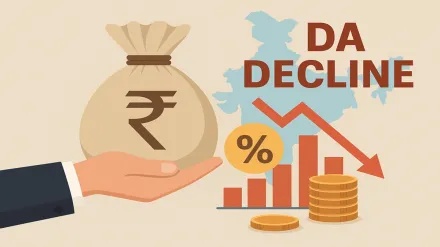
DA Hike Disappoints Employees as Inflation Declines
The Indian government recently unveiled a 2% increase in dearness allowance (DA) for central employees and pensioners, marking the lowest raise in 78 months. However, recent data reveals a potential further reduction in the DA hike for the July-December 2025 cycle, raising concerns among millions of government workers. With inflation declining to a five-year low, the anticipated DA adjustment may fall below 2% or even reach zero, sparking worries about the financial stability of employees and retirees. This development underscores the delicate balance between cost-of-living adjustments and economic trends, leaving workers in limbo as they await the final decision.
Understanding Dearness Allowance and Its Calculation
Dearness allowance is a critical component of government employee compensation, designed to offset the impact of inflation on purchasing power. The allowance is recalculated twice annually, based on the All India Consumer Price Index (AICPI-IW), which tracks inflation across key goods and services. For the July-December 2025 cycle, the AICPI-IW data for January and February 2025 showed a decline, suggesting a possible reduction in the DA hike. This index, maintained by the Labour Bureau, serves as the foundation for determining the final adjustment, with recent figures indicating a potential drop in the index over the next few months.
The Role of Inflation in DA Adjustments
Inflation rates have plummeted to a five-year low, with retail inflation based on the Consumer Price Index (CPI) reaching 3.34% in March 2025. This decline has directly influenced the AICPI-IW, which fell by 0.4 points in February 2025, signaling a potential slowdown in inflationary pressures. The Labour Bureau’s latest data highlights the correlation between inflation trends and DA adjustments, with the AICPI-IW serving as the primary metric. Analysts suggest that if the downward trend continues, the DA hike for the next cycle could be significantly lower, potentially impacting the real income of millions of employees and pensioners.
DA Formula and Its Implications
The DA calculation under the 7th Pay Commission employs a specific formula that factors in the AICPI-IW. The formula, which uses the base year 2016, involves averaging the CPI-IW for the past 12 months and applying a mathematical adjustment to determine the final hike. This process ensures that DA remains aligned with inflationary trends while maintaining the purchasing power of employees. However, the current trajectory of the AICPI-IW suggests that the upcoming adjustment may not meet expectations, raising concerns about the adequacy of the allowance for workers facing rising living costs.
Broader Impact on Government Workforce
The potential reduction in DA has far-reaching implications for central government employees and pensioners, many of whom rely heavily on this allowance for their financial security. With the 7th Pay Commission’s 10-year term set to expire on December 31, 2025, the final DA adjustment could significantly affect their monthly income. Pensioners, in particular, may face challenges as DA constitutes a substantial portion of their income. This situation highlights the need for a balanced approach to inflation adjustments, ensuring that government workers are adequately supported amid economic fluctuations.




